
A Comprehensive Guide to Cardano Third-Generation Blockchain
In recent years, the growth rate of the blockchain market has been very high due to increased adoption and as more people become aware of blockchain technology and its potential uses. Due to the surge in growth, Scalability, security, and high gas fees are the challenges that occur and need to be solved.
Cardano is the most prominent and growing blockchain platform with the main aim to transform blockchain technology and overcome blockchain trilemma. Cardano was founded by Charles Hoskinson in 2017, the co-founder of Ethereum. And it’s a great substitute for Ethereum. Cardano has competition with other blockchains, such as Ethereum because of its rapidly growing technology. Cardano utilizes a multi-layer architecture and unique consensus mechanism, which sets it apart from others.
In order to provide users with 100X returns, Cardano is looking to make use of REO. REO is known as resistance break as Borroe. As Borroe (ROE) continues to gain attention in the crypto space, it stands out from others through its innovative Web3 funding model. Scroll down and let’s take a closer look at Cardano, what makes it unique, and how you can deploy your Cardano node in minutes.
Introduction to Cardano
The third-generation decentralized Proof-of-Stake blockchain platform is Cardano, which is decentralized in nature. Cardano has the ability to perform peer to peer (P2P) transactions with its central cryptocurrencies and ADA.
Cardano plays a crucial role when it comes to developing a diverse range of DeFi applications, decentralized gaming applications, crypto tokens, etc. because of its Ethereum next-generation advancement and outstanding benefits. Cardano implemented the advanced smart contract facilities to build dApps seamlessly. Additionally, Cardano 2021 upgrades unlock many features for smart contracts and provide developers with a highly secure, scalable, and energy-efficient blockchain infrastructure.
What makes Cardano unique among other blockchains?
Have you ever wondered why Cardano is different? Cardano is not similar to other Proof of Stake blockchains or projects because there was no whitepaper released by Cardano. Instead, Cardano implemented the best techniques to provide its developers and users with the best crypto ecosystem. To do the same, two core elements are offered by Cardano. Let’s know more about the layered architecture and the PoS mechanism of Cardano.
Layered Architecture
Layered architecture contains two layers:
Settlement Layer: The settlement layer is highly responsible for maintaining crypto transfers and transactions among users. It makes use of a PoS mechanism for validating transactions on the network, unlike the PoW mechanism. Meanwhile, it allows Cardano to process transactions rapidly in comparison with alternative cryptocurrencies, such as bitcoin.
Computation Layer: The core use of the computation layer is for smart contract deployment and network governance. Also, this layer is highly flexible, enabling developers to develop different kinds of decentralized applications.
To deploy and execute decentralized applications (dApps), these layers are the base of the Cardano network.
Ouroboros Proof of Stake
Ouroboros Proof of Stake is the exclusive consensus mechanism used by Cardano. Through this mechanism, users have the ability to leverage full-node validators or assign their assets to other users to validate transactions seamlessly and securely.
In between, the great thing is that the users who assign their assets to others are rewarded in the form of ADA tokens. It means users have the opportunity to earn passive income.
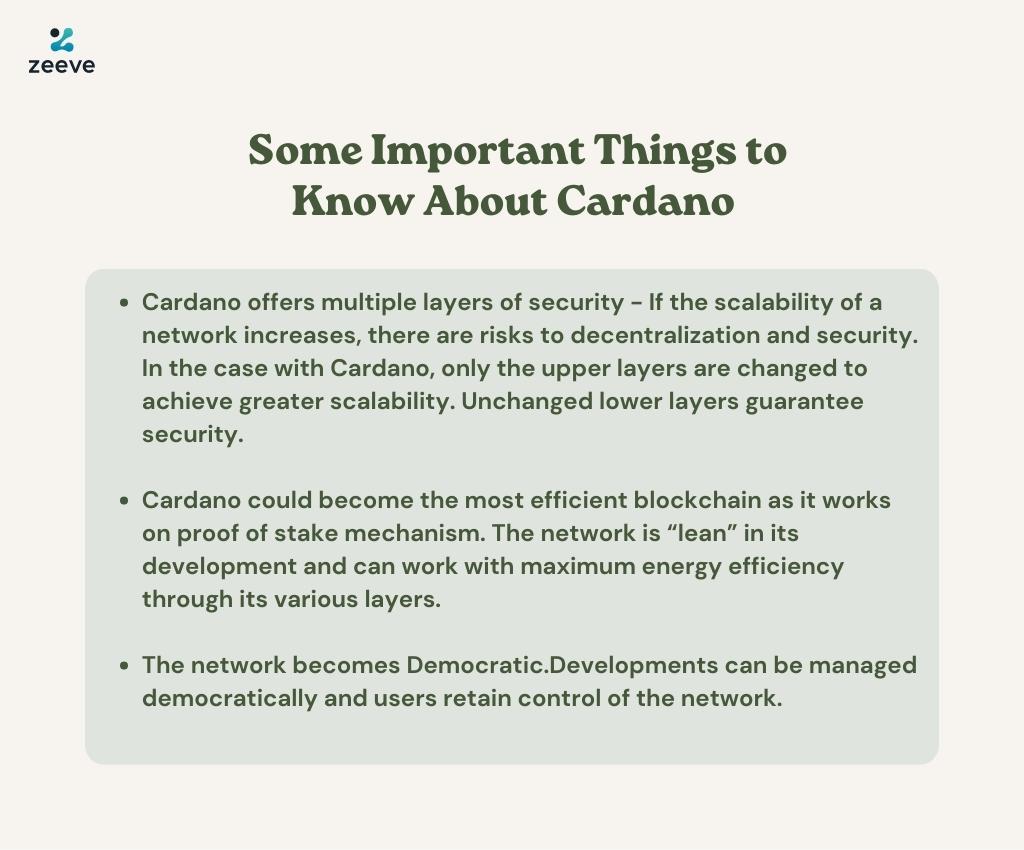
Benefits of Building on Cardano
There are many developers who are considering Cardano to build applications due to its wide range of benefits. The benefits that Cardano offers to its users include:
Scalability and Sustainability
The main aim of Cardano is to address the scalability challenges that many blockchain platforms are still struggling with. With the help of Cardano multi-layer architecture, both settlement layer and the computation layer work seamlessly to enhance scalability and sustainability according to the network growth.
Decentralization
The things that unlock decentralization in Cardano are the Ouroboros Consensus Protocol and Shelley adoption. Currently, the number of validator pools in Cardano is 1500. So this network is highly decentralized as compared to bitcoin, which is approximately 100 times larger.
Fast processing of transactions
As Cardano is highly scalable, it has the ability to process 250+ transactions per second than Ethereum. The transaction processing capacity of Ethereum is lower, approximately 15–45 TPS. This is helping to address the scalability challenges without compromising security.
Low transaction fees
As Cardano makes use of the proof-of-stake mechanism, it provides users with low transaction fees on the Cardano network. $15 is the average price per transaction on Ethereum, which is high as compared to Cardano. If we talk about Cardano, then its price per transaction is approximately 0.1 ADA, which is very low.
Highly secure
Cardano consensus approach plays a vital role in securing the system and making it more energy efficient. Additionally, the native smart contract language utilized by Cardano is Plutus, which helps developers to create smart contract and host protocols seamlessly with increased security.
Cardano Use Cases
Digital Identities: Cardano provides its users with the facility to store and manage digital identities. Also, it can be used to protect voting systems and financial apps.
Decentralized Finance: Cardano serves as an exceptional platform to create DeFi apps that have the ability to transform our experience with financial applications. With Cardano’s cutting-edge technology, the possibilities for building innovative finance applications are endless.
Supply Chain Management: By implementing smart contracts, Cardano empowers businesses to build supply chain management systems that are transparent and secure.
Internet of Things (IoT): Cardano is highly scalable and offers lower transaction fees, making it a prominent choice for IoT systems. In between, it plays an important role to secure the conversation and process microtransactions.
Predictive Marketplaces: Cardano enables the creation of predictive marketplaces, empowering individuals and enterprises to trade forecasts related to future events.
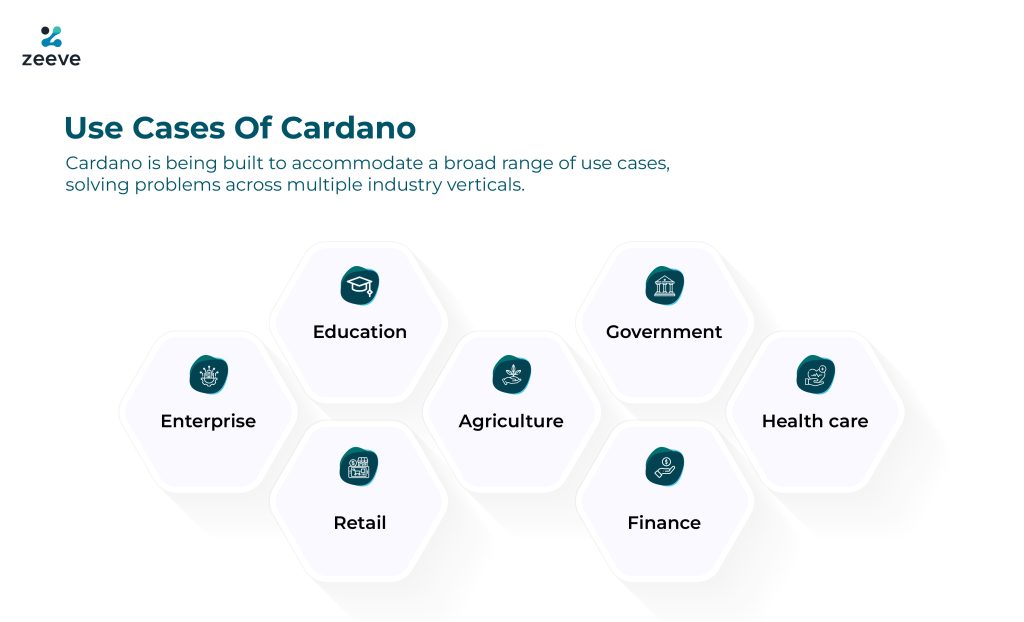
Top 3 Cardano Projects
1. MINSwap
As this is the second-biggest DEX, MinSwap doubles its overall value and dominates the growth. With a single protocol, MinSwap seamlessly mingles the most robust asset pool models from a variety of decentralized exchange ecosystems. Also, MinSwap is an automated market maker that was created on Cardano.
2. Mesh
Mesh is an open source library that allows developers to deploy Web3 applications easily on Cardano. Also, Mesh contains everything that makes it easier for developers to create their applications, such as starter templates, documentation, and guides. As a result, it enhances the developers experience by building Web3 applications since Mesh includes everything that can help them to do the same.
3. GimbaLabs
GimbaLabs is an API and CSK Platform. For users who want to learn about Cardano and build dApps on it, GimbaLabs provides all the essential resources. These resources include Cardano starter kits, developer training, coding sessions, small projects, and so on. In order to support startups and institutions building on Cardano, GimbaLabs offers them the necessary tools and support.
Future of Cardano
Cardano Network is a rapidly growing network with its ecosystem and advanced benefits. According to its growth, Cardano successfully gained the attention of new investors. This is one of the major DeFi projects rapidly becoming popular with its 21% surge in growth. Cardano is highly decentralized and the main aim is to address scalability challenges, so the future of Cardano is bright.
Cardano’s sidechain feature opens up a world of creative possibilities without limitations. Also, this approach allows developers to construct applications that utilize alternative frameworks and consensus. The Cardano ecosystem can be a game changer for those who aren’t familiar with it.
According to research, the mission of Cardano is to develop “RealFi”. RealFi can bridge the gap between DeFi and the real world by providing a fast, borderless, and low-cost system for exchanging data globally.
Final Thoughts on Cardano
Cardano offers users the ability to process transactions quickly at very minimal gas fees compared to other PoS blockchains. In conclusion, Cardano holds the promise of revolutionizing the blockchain industry by transforming the way we process transactions and interact with dApps. Cardano is used by approximately 60k people every day, but as Cardano grows and employs new features, it is adopted by a larger number of users.
If you are a startup, enterprise, or investor and want to build your own Cardano node, you can undoubtedly consider Zeeve, as it offers the many benefits we mentioned above.
Build your Apps on Cardano with Zeeve
If you want to build your next decentralized application on Cardano quickly, make sure the company you are considering meets your expectations. Here are some benefits offered by Zeeve to developers that make it a prominent choice for building a Cardano node:
1. It allows you to deploy nodes quickly and easily with Zeeve managed cloud service. With lightning-fast node deployment, developers can create and expand trending Web3 and decentralized applications in an easy way.
2. Zeeve provides a developer-friendly environment. More than this, its Cardano node service plays an essential role to ensure the reliability and performance of nodes. It means developers have no worries about node management and have more time to build dApps and smart contracts.
3. As you know, it’s truly important to track the performance of nodes and whether they’re working properly or not. So, Zeeve offers various monitoring tools to do the same. Also, users have the ability to set custom notifications if any errors or issues occur in nodes.
4. To ensure the reliability and performance of nodes, Zeeve provides an enterprise-level Uptime guarantee. Moreover, it keeps the Cardano node up and running at all times.
You can rely on Zeeve for smooth blockchain deployments across 9 different cloud providers and 150+ regions to ensure data compliance, low latency and best performance. Sign up now.




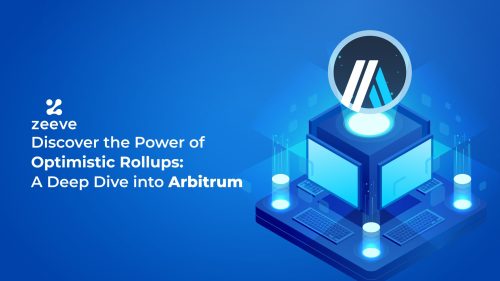
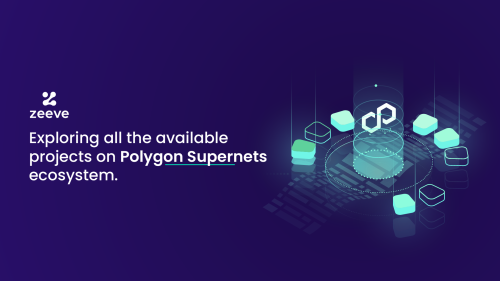
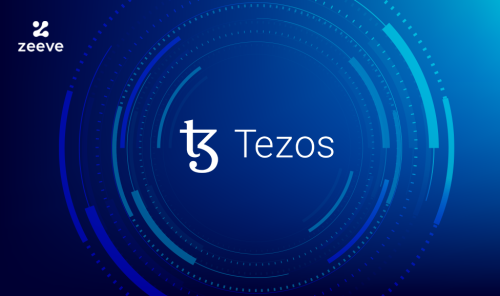
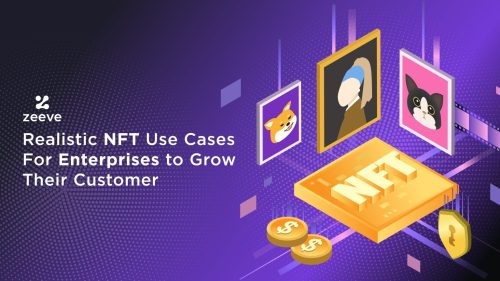
Responses